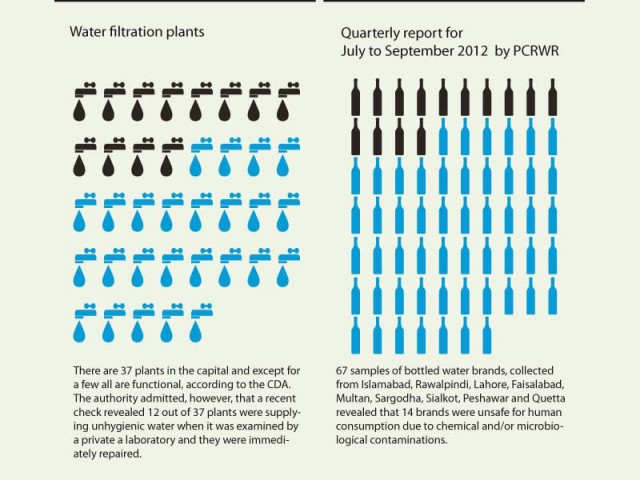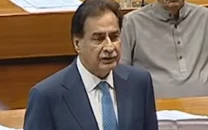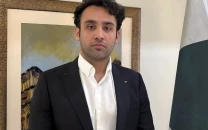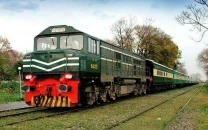Shortages abound: where will the water come from
city can barely meet half of its water requirement in winters, new projects underway, but mostly years from operating.

The capital’s future is uncertain, at least when it comes to water. With current resources, the gap between the squeezing water supply and demand will increase amid projected fast growing population of the city.
Presently, the city needs around 120 million gallons of water per day in summers to cater to the roughly 1.5 million Islamabadis. The problem is that only 84 million gallons per day are available for most of the year, and even that drops to about 60 to 65 million gallons per day when the monsoon season is delayed or there is insufficient rainfall.
Experts say the average temperatures in the federal city have increased over time. This summer, it reached 48 degrees Celsius, while highs in the 40s have become something of a norm. With heat waves becoming a common phenomenon in the city, the demand for water has understandably increased.
Simly, Rawal and Khanpur dams are the city’s primary water sources, but for many years they have not gotten anywhere near their full capacity because of inadequate input from rainwater. In fact, all three dams’ reservoirs had hit dead level before rains in the monsoon season, meaning they could not be used to supply water.
Poor planning
Farkhand Iqbal, before being removed as the head of the CDA, admitted that the civic body never developed any long-term water policy in the past.
He said the authority has signed an agreement with the Chinese government to address water issues in the long term. The water pipeline project will cost $1.2 billion and will take three years to complete, Iqbal said.
However once completed, it will supply 200 million gallons of water per day (MGD) from Tarbela to Islamabad, much higher than the city’s current need.
The CDA is also constructing Charah Dam, which has a 15 MGD capacity. Half of the water from which will go to Islamabad and the other half to Rawalpindi. The dam would be completed in four years. In addition 75 percent of the on the Shah Allah Ditta Reservoir has been completed. The Reservoir will supply 13 sectors in the -11, -12, -13 and -14 series
Water filtration plants
CDA Director General Water Management Sanaullah Aman said that there are 37 water filtration plants in different sectors of the capital and “most are functional”.
He admitted, however, that in a recent a private laboratory found 12 of these plants to be providing unhygienic water. The plants were “immediately” fixed, he said.
Falling water tables
An official of the ministry of climate change, Muhammad Saleem Sheikh, said that there is a serious water issue in Islamabad and the situation will worsen in the coming years due to climate change. “Some 10 to 15 years back, underground water was available at 40 to 50 feet deep, but now there is no water even at 200 feet deep in many parts of the capital,” he said.
“The government should make laws against water wastage and make a rainwater harvesting policy under which it should be obligatory for each house in cities [that receive enough rain] to have rainwater harvesting systems,” he said.
Sheikh said that keeping in view the fast climatic changes, the CDA should have a long term water management plan.
The people are not waiting for the CDA to come through for them. Rehman Gul, A borehole digger, said that a few years ago he would only get one or two jobs every six months. “But now, I dig an average of four boreholes every month.”
He said that people do not get water from pipelines and there isn’t much rain either. Instead of boring up to 100 to 120 feet to get to water, the borers have to go as deep as 200 feet. Consequently, the cost of boring for water has also gone up.
“Depending on depth, boreholes cost upwards of Rs100,000,” Gul said. It is a price many are willing to pay.
Published in The Express Tribune, October 22nd, 2012.



















COMMENTS
Comments are moderated and generally will be posted if they are on-topic and not abusive.
For more information, please see our Comments FAQ